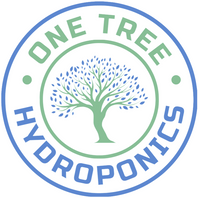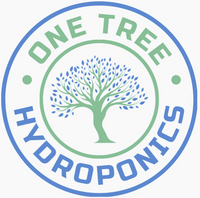Aquaponics: The Future of Sustainable Agriculture

Introduction
You've probably heard of aquaponics before - it's a relatively new sustainable agriculture method that is gaining in popularity. But what is it, exactly? Aquaponics is a system that combines traditional aquaculture (raising fish) with hydroponics (growing plants in water) to create a self-sustaining ecosystem.
The fish waste provides nutrients for the plants, and the plants act as a natural filtration system for the water, which keeps the fish healthy. Aquaponics is a great way to produce healthy, organic food while using a fraction of the water that traditional agriculture methods require.
In this article, we'll take a closer look at aquaponics and see how it could be the future of sustainable agriculture.
What Is Aquaponics?
Have you ever heard of aquaponics? It's an innovative food production technique that combines aquaculture (fish farming) with hydroponics (soilless crop production in a water-based environment).
The result is a sustainable system that uses 90% less water than traditional farming practices. Aquaponics is also more efficient because it uses the waste from the fish to fertilize the plants, and the plants act as a natural filter for the water.
It's an exciting new way to produce food, and I think we'll be seeing more and more aquaponics systems in the years to come.
The Benefits of Aquaponics
You might be wondering what aquaponics is. Simply put, it's a sustainable agriculture system that combines fish farming and plant production in one integrated system.
But what does that mean for you? Well, let's take a closer look at some of the benefits.
First of all, aquaponics uses 90% less water than traditional agriculture. That's because the plants in an aquaponics system purify the water so that it can be returned to the fish.
Second, aquaponics reduces pollutants and enhances plant yields. The plants act as natural filters, cleaning the water and removing any harmful toxins. This results in larger, healthier plants that are packed with flavor.
So if you're looking for a more sustainable way to grow your own food, Aquaponics might just be the answer you're looking for.
Aquaponics vs. Traditional Agriculture
Aquaponics is a newer method of agriculture that does not use soil systems. The plants are grown in water, and the waste from the fish provides the nutrients for the plants. This method is especially beneficial because it can be done indoors, making it independent of climate and weather conditions.
Another great benefit of aquaponics is that it uses up to 90% less water than traditional agriculture. This is a huge advantage, especially in areas where water is scarce.
The Future of Aquaponics
Have you ever heard of aquaponics? It's a relatively new term, but it's one that is quickly gaining popularity because of its many benefits. Aquaponics is a combination of fish farming and hydroponics, which is a method of growing plants in water.
What makes aquaponics so appealing is that it is efficient and scalable. That means that it can be used on a small or large scale, depending on your needs. And it's also a more sustainable method of food production than traditional farming practices, which often rely on pesticides and chemical fertilizers.
In fact, aquaponics can actually help to conserve water because it uses less than traditional farming methods. So if you're looking for a way to produce healthy, sustainable food, then aquaponics might be the answer you've been looking for.
Aquaponics in Singapore
Singapore is a city-state located in Southeast Asia. It's a country that's known for its high population density and for being a major commercial center in the region.
You may not know this, but Singapore is also home to some of the world's best aquaponics systems. Aquaponics is a method of agriculture that involves growing vegetables and fish together in a confined space, without the use of fertilizers and pesticides.
It's an efficient way to produce food, and it fits into the circular economy by minimizing waste and maximizing efficiency. In Singapore, aquaponics is being used to produce food locally and reduce the country's dependence on imported food.
How to Start Your Own Aquaponics Garden
If you're interested in learning more about aquaponics, you're in luck. It's actually a really easy process to get started. Here are the basics:
The first step is to set up your fish tank. This will be home to your fish, and you'll need to make sure the water is clean and at the right temperature. You can use any type of fish for your aquaponics garden, but tilapia are a good choice because they're hardy and grow quickly.
Next, you'll need to set up your hydroponic system. This can be done in a number of ways, but the most common is to use a PVC pipe with grow beds stacked on top of each other. Once your system is set up, it's time to start planting! There are many different types of plants that thrive in an aquaponics garden, so you can really get creative with your gardening.
That's it! Once your plants start growing, they'll provide plenty of food for your fish, and the cycle will continue. It's a great way to produce sustainable food that doesn't rely on harmful chemicals or pesticides.
Conclusion
Aquaponics is a great way to sustainable agriculture and it is the future of agriculture. You can farm fish and vegetables together in a healthy, symbiotic environment. The fish provide nutrients for the plants, and the plants filter the water for the fish.
Aquaponics is a great way to produce healthy, organic food and it is environmentally friendly. It's a great alternative to traditional farming methods, and it's perfect for anyone who wants to get into sustainable agriculture.
If you're interested in learning more about aquaponics, One Tree Hydroponics is a great resource. They offer everything from beginner's kits to advanced systems, so you can find the perfect system for your needs.
0 comments


